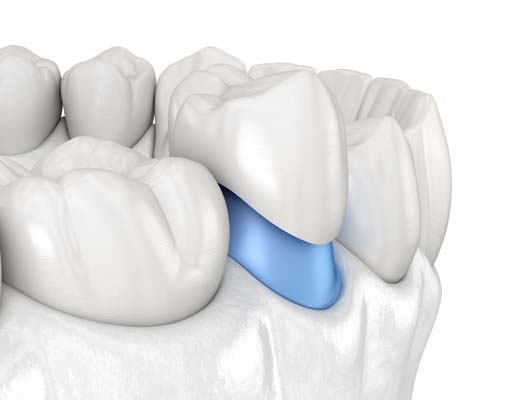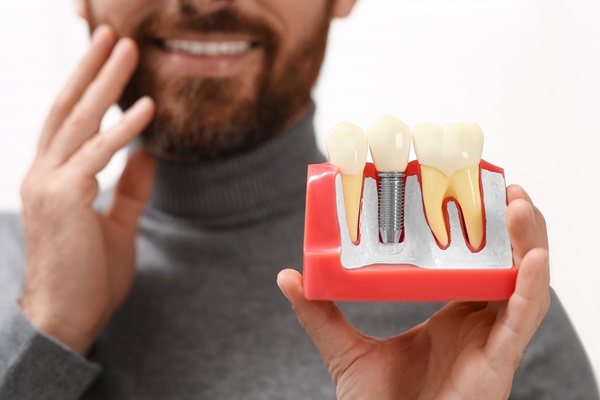Does a Dental Crown Protect Your Tooth?

A dental crown is a restoration that completely covers a tooth above the gumline. It is often used to protect or restore a damaged or decayed tooth. A crown can also help to address a variety of other issues. Read on to find out more about how a dental crown can protect your tooth.
Dental crown
Dental crowns can be made from all-ceramic, all resin, metal, or porcelain fused to metal. Each type of dental crown has its benefits. Resin and porcelain crowns are very popular because they can be made to look almost identical to natural teeth. All-metal crowns are very strong and durable.
This makes them a great choice for molars. One of the main benefits of dental crowns is that they can protect teeth. Crowns can protect teeth that are broken or have extensive decay. Sometimes, crowns can also be used to protect teeth that have been restored by root canal treatment.
Repairing a decayed or broken tooth
Teeth chip or break because of a variety of issues, including a blow to the face, falling, or biting down on something hard. If a large piece of a person’s tooth breaks off or a tooth has extensive decay, the dentist may recommend a dental crown. In such cases, the dentist will first grind or file away part of the remaining tooth. The dentist will then cover it with a dental crown to protect it and improve its look. A dental provider usually drills away all the decayed area and enough of the remaining tooth to ensure a good fit.
A crown can also be used to hold together parts of a cracked tooth to prevent it from breaking completely, which also protects it from further damage. Root canal treatment is often used to repair and save an infected or severely decayed tooth. A tooth that needs root canal treatment usually has extensive decay, a large filling, or other problems. In many cases, a crown or other dental restoration is placed on the restored tooth to protect it. It can also help prevent the tooth from breaking.
Dental crown procedure
The dental crown procedure can be completed in just two dental visits. The first visit usually involves the examination and preparation of the tooth. Preparing the tooth usually involves removing a layer of the outer surface of the tooth. The dentist will then make an impression of the tooth using a paste. Impressions of the teeth above the crown will also be made. This is vital to ensure the dental restoration will not affect the patient’s bite.
The impressions will be sent to a dental lab, where the dental crown will be made. The second visit usually entails the placement of the permanent custom-made crown. During the second visit, the dental provider will remove the temporary crown and check the shape, color, and fit of the permanent crown. The dentist will then permanently cement the new crown in place.
Visit your dentist
A dentist might recommend a crown for a variety of reasons, including protecting a tooth. Dentists usually use crowns to protect teeth that are weak or have broken. They can also restore the appearance of broken or decayed teeth. To find out more about dental crowns, talk to your dentist today.
Are you considering getting a dental crown in the Georgetown area? Get more information at https://www.georgetown-dental.com.
Check out what others are saying about our dental services on Yelp: Dental Crowns and Dental Bridges in Georgetown, MA.
Recent Posts
Implant crowns are a long-term solution to tooth loss that are easy to care for, but the process of receiving the new and beautiful replacement teeth is not always pleasant. To make the aftercare process following the placement procedure go as smoothly as possible, it is helpful to learn some aftercare tips from a dental…
Dental crowns are the most popular restorations administered by a general dentist. Their ability to completely cap molar teeth makes them unique. Additionally, there are many options when it comes to the material that dental crowns are made of. This gives patients the ability to weigh the pros and cons of each material, allowing for…
Wondering what to do about Dental Crowns that become loose? A loose dental crown can be quite concerning, especially if it causes discomfort or difficulty eating or speaking. Understanding what to do when a crown becomes loose can be helpful as most individuals rely on their restoration to function normally. Dental crowns are an important part…
A chipped tooth counts as a dental emergency when the damage is extensive enough to leave the tooth's pulp chamber compromised. Such injuries often come with inflammation, bleeding, tenderness and excruciating toothaches.The pulp chamber houses a tooth's blood vessels and nerves, so damage to it leaves these soft tissues vulnerable to infection. Irritants in the…


